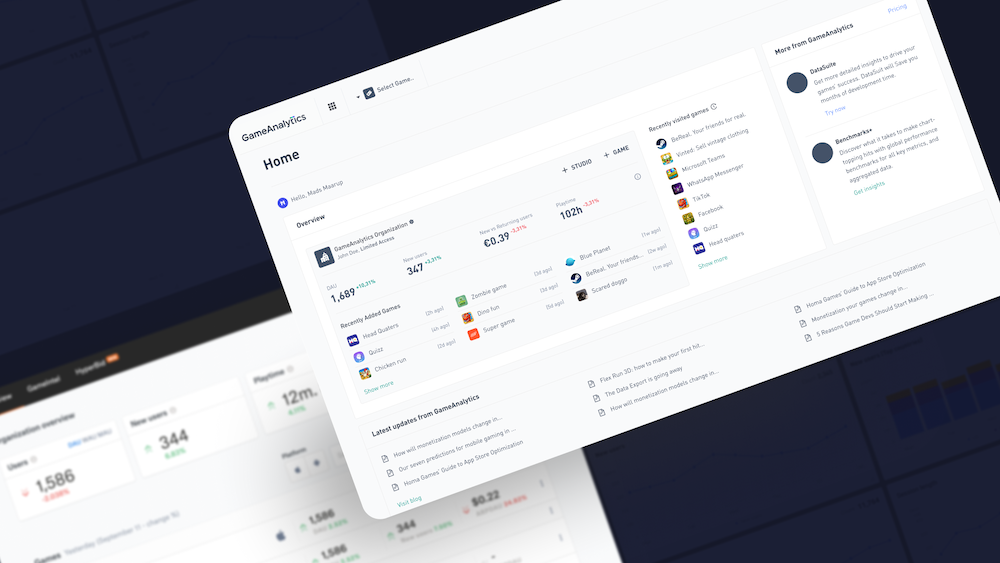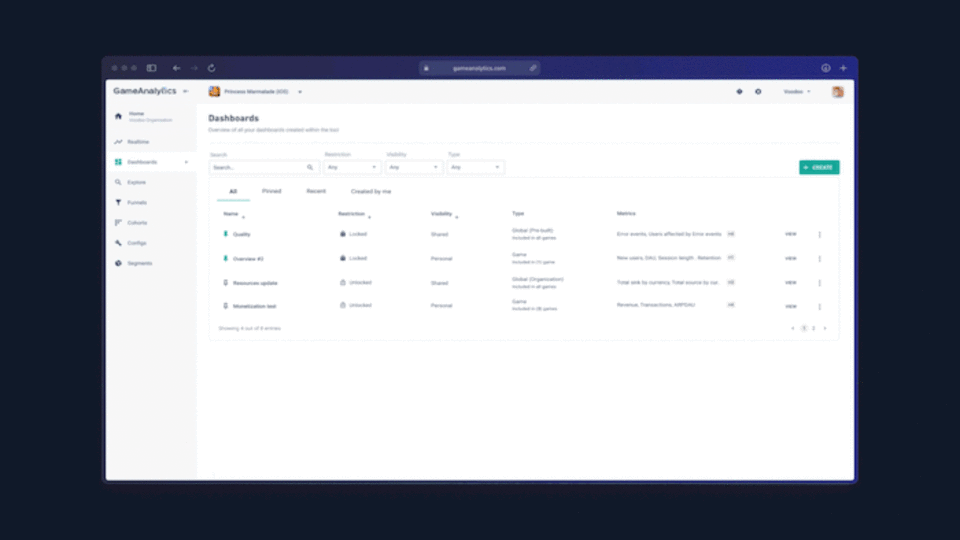About this change
We’re truly excited to announce that we’ll soon be launching a major, much anticipated and much revamped version of GameAnalytics. In this update, we’ll share details about what we’re changing, why we decided to make these updates, and what improvements you can expect them to bring.
So… what’s going on?
Over the past few years, we’ve focused on developing a new version of GameAnalytics, bringing huge improvements to load times, studio management, game organization, funnels, AB testing and event level analysis with our explore tool. This is just the tip of the iceberg; our new version represents a fundamental overhaul to our system design and user interface, bringing hundreds of different usability improvements.
The coming update is internally named GameAnalytics V3 and it represents a major shift in our product technology, where we’ve listened to your feedback and delivered a huge number of your suggestions.
Since we founded GameAnalytics we’ve made the following major releases.
| version | Release year |
|---|---|
| V1 | 2012 |
| v2 | 2013 |
| V2.5 | 2018 |
| V3 | Very soon! |
What’s the release plan for v3?
In the coming few weeks, we will go live with an Open Beta where all users can experience GameAnalytics V3. From the existing (V2.5) tool it will be possible to switch to and from the V3 Open Beta. Some functionality is still in development and improvements will be released throughout Q4.

We will launch the updated version as the default when the Open Beta period ends, so you will still be able to transition and use the old V2.5 well into 2023. Exactly what date this permanent switch to V3 will happen is still TBD, but it will be at the latest during Q1 2023.
After the full switch to GameAnalytics V3, we will continue delivering improvements based on your feedback, aiming to better optimize both your productivity and our overall system performance.
Why change GameAnalytics?
Our main goal with V3 is to provide better features and faster updates. During the past years we have heard your valuable feedback and, in many cases, we sadly could not always quickly deliver these improvements.
One of the main reasons for this was due to limitations in the technology that we built almost 9 years ago. It was clear that we needed to pursue a different tech stack. Now, in contrast, our amazing developers and designers have built a new framework which enables fast feature scaffolding for a continually evolving, state-of-the-art analytics tool.
With this modernized technology underpinning GameAnalytics V3 we decided to not only rebuild for feature parity, but also to improve and reimagine our service. We have gathered many years of feedback to rethink and improve much of our core functionality.
Key improvements to expect
We will go into more specific details for each feature in later updates. We’ll also share detailed documentation and helpful video guides. But for now, here’s a quick overview of some of the major improvements you can expect to see available in GameAnalytics very soon.
- Funnel results delivered almost instantly (seconds rather than minutes)
- Overall faster user experience (especially for studios with 1000s of users/games)
- New ‘home screen’ enabling better studio management (sneak peek below)

- Easier to resume work done at last login via recent games
- Deeper insights possible via updated query builder
- Improved user management and settings
The initial release will not have everything all at once, but with your feedback, our new tech and great team… we will get there very quickly! Expect us to ship many more feature releases and improvements, at a much greater cadence than ever before in 2023.
We can’t wait for you to try it
For now, this post is mainly to give you a heads up. The V3 Open Beta is right around the corner and we’ll keep you updated with more information including a full video overview very soon.
Stay tuned!
